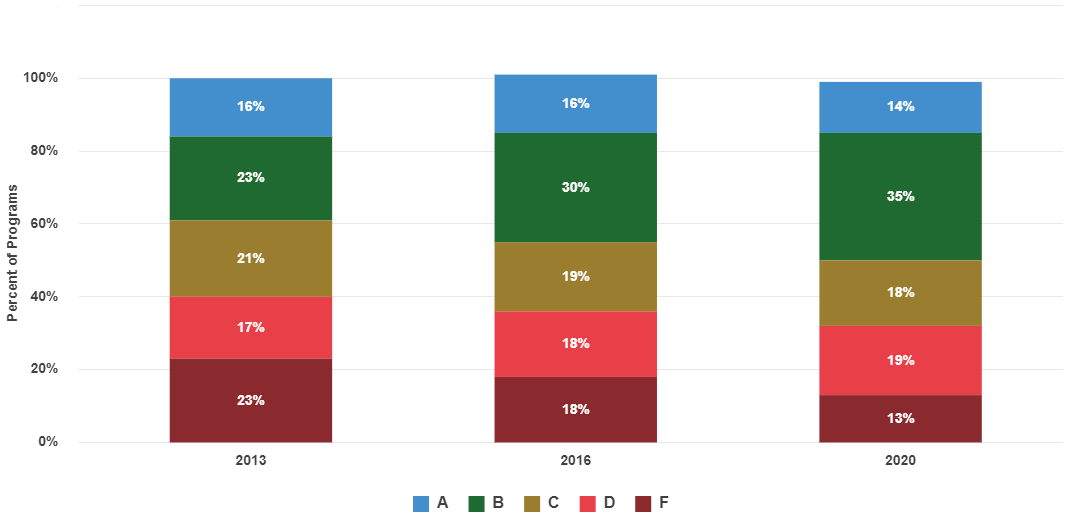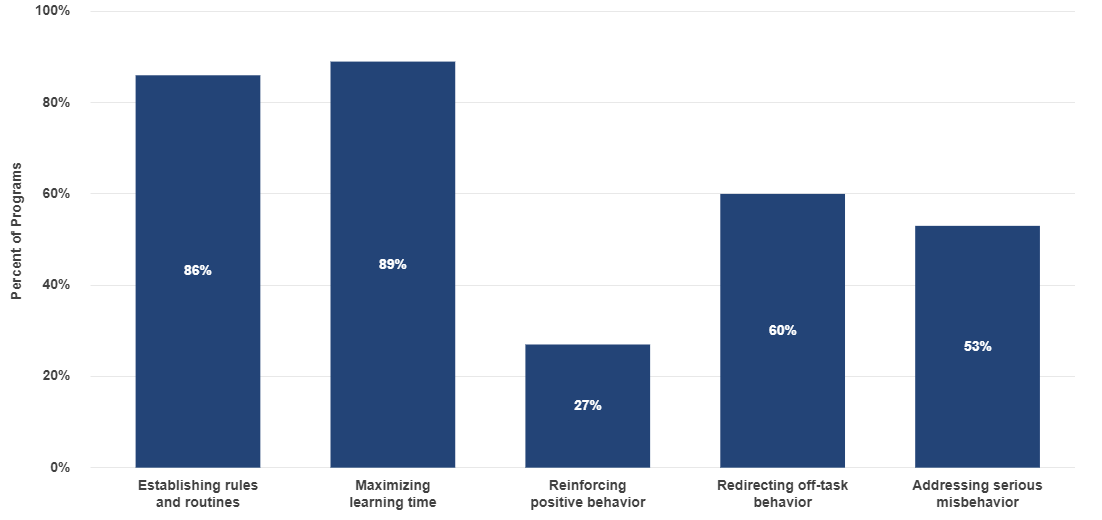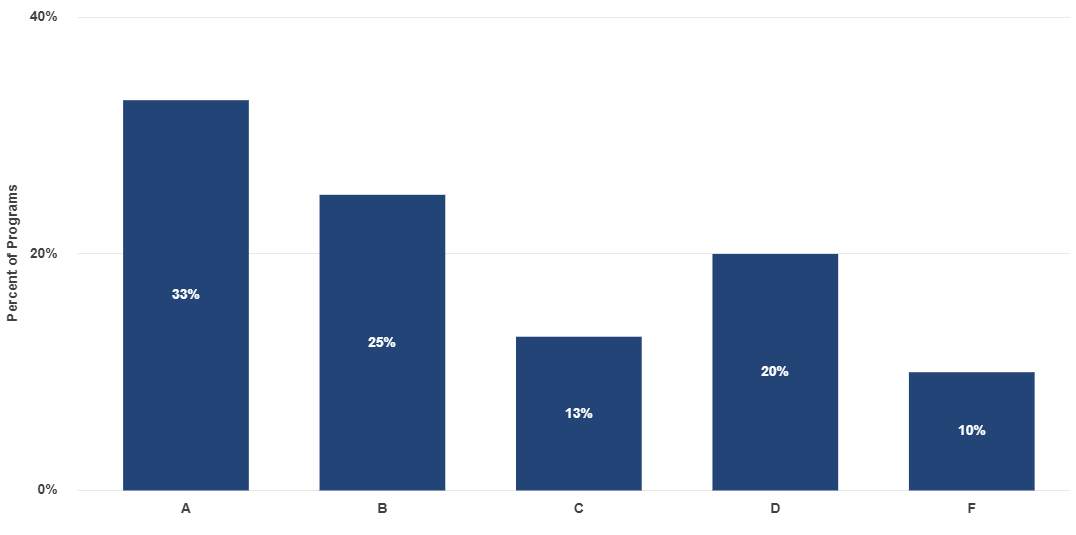Evaluation is based on the following data sources:
Observation and evaluation forms used by program supervisors or mentor/cooperating teachers to evaluate student teachers, residents, or initial licensure candidates during their first year in the classroom.
Any accompanying rubrics or guides that explain how the evaluation forms are used.
Programs are asked to provide the documents listed above. Once collected, a team of analysts verifies that all of the necessary documents are in hand for a program. Programs are evaluated only if analysts are able to identify and collect all relevant forms.
To be hired, the analysts who work on this standard must complete a rigorous assessment of their analytical ability which only 12% of applicants satisfy. Analysts do not begin officially rating programs until they are able to complete practice ratings with at least 90% agreement to the work of experienced raters. To ensure consistent interrater reliability, 20% of programs are randomly selected for a second evaluation, and scoring variances are periodically assessed. Analysts may be asked to complete additional training if scoring variances are greater than 10%.
With a full set of observation and evaluation instruments, analysts look for clear and precise references within each instrument to the five evidence-based classroom management strategies. These strategies are:
-
Establishing rules and routines that set expectations for behavior;
-
Maximizing learning time as demonstrated by four sub-strategies in this domain:
promoting student engagement
managing time
managing class materials
managing the physical setup of the classroom.
Full credit is awarded for this strategy if the set of instruments references at least two of these four sub-strategies. This is the only one of the five strategies which is divided into sub-strategies.
Reinforcing positive behavior by using specific, meaningful praise and other forms of positive reinforcement;
Redirecting off-task behavior by using unobtrusive means that do not interrupt instruction and that prevent and manage such behavior; and manage such behavior, and;
Addressing serious misbehavior with consistent, appropriate, respectful consequences.
Program scores, converted to A-F grades, are based on the number of strategies referenced in either the observation and/or evaluation forms. An A means that a program's forms provide feedback on all five strategies. A B is four strategies, a C is three strategies, a D is two strategies, and an F is one or no strategies.
The examples below, taken from actual programs that were evaluated, show language that would and would not receive credit. However, credit is not based purely on the presence or absence of individual words. Context is always taken into account.







